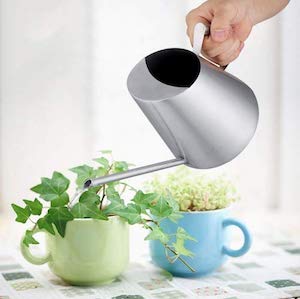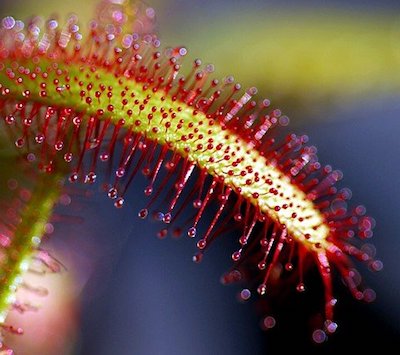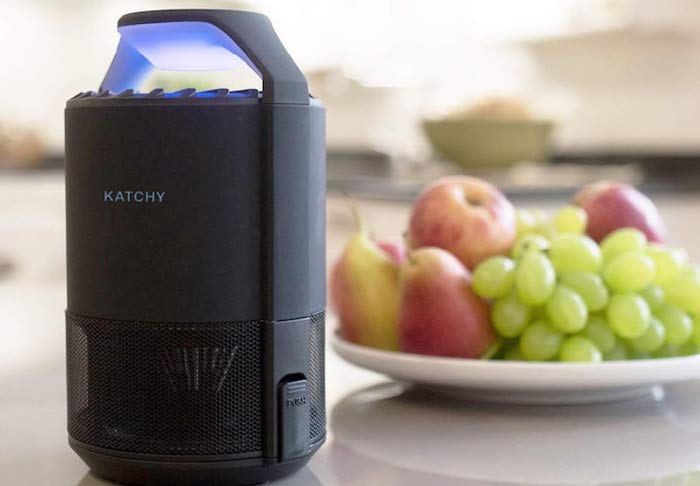Recently, I noticed that I have little flies in my house. At first, I thought it was fruit flies but after a little bit of research, I’ve learned these are fungus gnats. The worst part is that these pesky flies were living in the soil of my houseplants! I had to act and figure out what needs to be done in order to get rid of these annoying pests.
So, how did I get rid of fungus gnats? I made sure all my plants had proper drainage, changed the soil in all my houseplants and covered the topsoil with sand or small stones.
Over the last few years, I have become interested in having some plants in and around my house. I chose plants that were easy to care for. When the pesky flies started to interfere with their peaceful existence, I was not going to let them get away with it. As it turns out there can be more than one reason why these flies start living in the soil of your plants. Also, as one can imagine, there are just as many solutions for how to get rid of them. It took me quite some time to do the research and when I was finished, I decided to put together this article with all the possible solutions I found for how to get rid of these pests.
Proper Drainage
Having good drainage in your pots is crucial here because gnats thrive in moist soil. This was my main problem. I purchased beautiful pots that had no drainage holes and although I put tons of stones on the bottom of the pot to create some drainage, it only worked for a time. My soil started getting moldy and was too moist. Gnats were thriving! I had to replant my plants into pots with drainage holes.
Do Not Overwater
 As mentioned in the previous paragraph, gnats need moisture to survive. When your soil is too wet, the gnats will keep multiplying and old ones will not die out before hundreds of new ones will appear. My trick for this is to use a watering canister. I personally use this Fdit Stainless Steel Watering Can from Amazon. This way I know how much water is in it and how much I need for each plant. Also, I set an alarm on my phone to remind me once a week to water plants. Also, very importantly, I told everyone in my family that I am in charge of watering plants so that no one else is adding water after I had already watered them. Assigning one person to do the watering is definitely a good idea.
As mentioned in the previous paragraph, gnats need moisture to survive. When your soil is too wet, the gnats will keep multiplying and old ones will not die out before hundreds of new ones will appear. My trick for this is to use a watering canister. I personally use this Fdit Stainless Steel Watering Can from Amazon. This way I know how much water is in it and how much I need for each plant. Also, I set an alarm on my phone to remind me once a week to water plants. Also, very importantly, I told everyone in my family that I am in charge of watering plants so that no one else is adding water after I had already watered them. Assigning one person to do the watering is definitely a good idea.
You can also use these self-watering globes. They will ensure that the topsoil stays dry and that you do not overwater your plants as well. When you use a regular way to water your plants, the topsoil level gets moist and gnats end up making their home there. With these watering globes, the roots of your plants get a sufficient amount of moisture and the topsoil remains dry and free of pesky gnats.
Keep your water collecting trays clean.
As you already know by now, gnats love moisture. They also like a slimy mold. If your collecting trays are full of it, this is an ideal environment for them to form and multiply.
Keep a carnivorous plant in your kitchen/house.
 The Cape Sundew, for example, is a beautiful plant that has dew like sticky droplets on it which also happen to be highly attractive to the pesky flies. The plant attracts the fly, the fly gets stuck on the plant, and the plant gets its nutrients from the little pest. You can pick one of these plants here on Amazon for less than $10 (plus shipping). They are very cool looking, easy to grow and your kids (if you have any) will love to watch them eating the insects.
The Cape Sundew, for example, is a beautiful plant that has dew like sticky droplets on it which also happen to be highly attractive to the pesky flies. The plant attracts the fly, the fly gets stuck on the plant, and the plant gets its nutrients from the little pest. You can pick one of these plants here on Amazon for less than $10 (plus shipping). They are very cool looking, easy to grow and your kids (if you have any) will love to watch them eating the insects.
Gnat sticks
These are little sticky sticks that you insert into the plant soil and gnats are attracted to the yellow color on the sticks and will fly to it just to get stuck there forever.
DIY gnat sticks
This is technically the same thing as the previous point but this one you can make at home by yourself. You can make them using a yellow highlighter or marker, some index cards, a stick (like a popsicle stick) and petroleum jelly. Basically, you stick this into the plant, attract the pests and they get stuck to the petroleum jelly.
DIY fruit fly trap
Make a concoction of apple cider, fruit juice or beer mixed with a drop of liquid soap near your plants. The soap helps to trap the flies in the liquid. You want to keep this in a clear plastic container covered with plastic wrap on the top, secured with a rubber band. Poke some holes in the plastic with a toothpick. The concoction will attract the flies and when they touch the liquid they will get stuck in there and die.
UV insect trap
This solution is great not just for the gnats, but also fruit flies, mosquitoes, flies, bugs and moths. It is non-toxic, children and pets safe, portable, low maintenance and easy-t0-use. The pests are lured by UV light, get sucked in by the fan, and get stuck in the sticky glue boards. You can check out the current prices for the UV insect traps on Amazon here.

Good Soil
Replant your plants. This one can be a hassle and a lot of work, but if you’ve tried everything else and still have problems you may want to try this. Take your plant out of your pot and remove as much of old soil as you possibly can by shaking out the roots. Also, remove any dead or moldy roots and replant in healthy new soil. If you are planting in the same pot, clean the pot thoroughly.
Cover the soil for your plants
You can add a layer of pebbles, stones, coarse sand or gravel on the top. Since gnats lay their larva in the topsoil of the plant – you want to deny them access to that topsoil. They cannot lay their eggs in the stones.
Check plants before you buy
Since you’re reading this article, chances are this option is too late for you, however, you may want to keep this in mind as you make future purchases. This one is not exactly how to get rid of them but more like how to prevent them in the first place. When you are purchasing a new plant, check the plant for gnats. You may want to remove the wrapper and check inside, scratch the soil a bit – the top layer is where the gnats will be and if they are there you will easily spot them. Also, just look to see if any flies are around your new plant to make sure you are not bringing an infested plant home to the rest of your healthy plants.
Isolate your new plants for two weeks.
This tip does not get rid of the pests – it prevents them from contaminating all your other plants. When you purchase a new plant, even when you checked for gnats at the store, you want to isolate the plant for two weeks to see if there are any eggs that may hatch from the soil and cause problems for you in the future. Keep an eye on this plant and if you don’t see any signs of gnats, you can let it join the rest of your houseplants.
